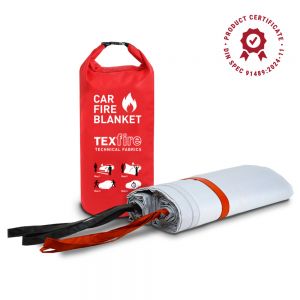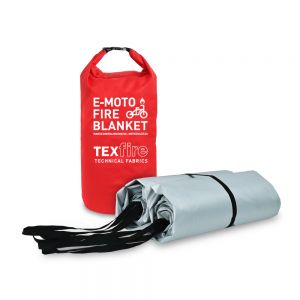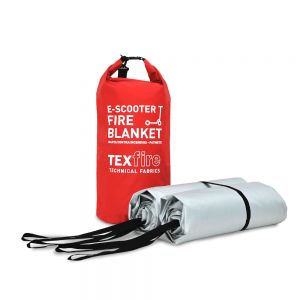How to proceed after using the car blanket?
The fire resistant blanket for car fire control is a highly versatile safety element that complements other tools used in different situations.
In addition, Texfire’s car fire blankets are certified according to the DIN SPEC 91489:2024-11 standard, which sets out the technical and quality requirements that fire blankets must meet for use in electric and petrol vehicles, ensuring a level of safety and reliability endorsed at European level.
ZERTIFIZIERUNGVIDEO DIN SPEC 91489
USE OF THE FIRE RESISTANT BLANKET FOR FIRE PREVENTION IN ELECTRIC OR GASOLINE VEHICLES
The car blanket is a versatile safety element that is not exclusively used in fire cases but also as a tool for prevention in risk situations, such as during the transportation of vehicles that have suffered an accident on the road. Additionally, for example, in mechanical workshops where vehicles that have suffered an impact or have damaged batteries are parked.
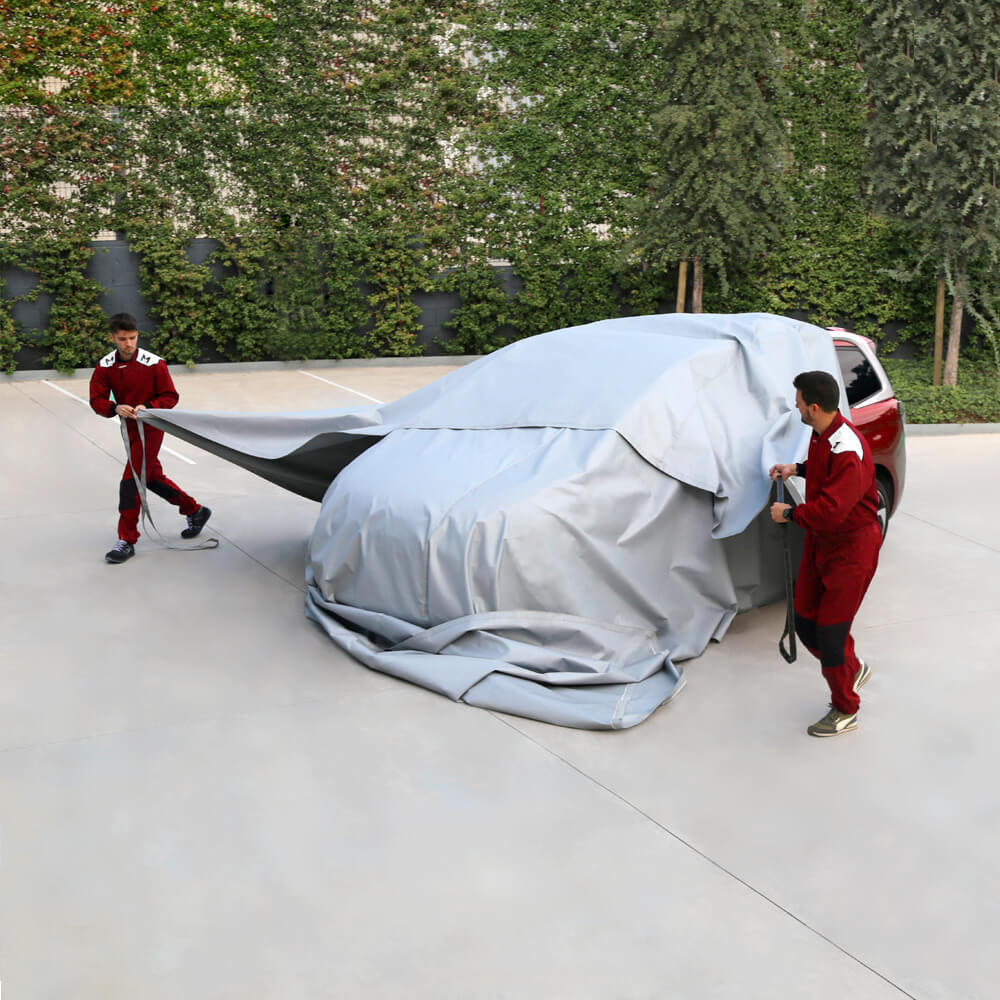
USE OF THE BLANKET FOR EXTINGUISHING FIRES IN GASOLINE CARS
The blanket is designed to extinguish fires in gasoline cars by completely covering them, thus preventing oxygen from entering from the outside. This technique helps to "smother" the fire and extinguish it after a while. Under no circumstances should the blanket be lifted without the supervision of firefighters, as the entry of oxygen could reignite the fire, creating a high-risk situation.
USE OF THE BLANKET FOR FIRE CONTROL IN ELECTRIC CARS
The main challenge with electric cars is that their lithium batteries generate flammable gases when burning. Therefore, using a blanket does not extinguish the fire but helps to control the spread of flames, minimize heat radiation, and also trap some of the toxic particles released with the gases.
WHEN IS IT SAFEST TO REMOVE THE BLANKET FROM THE VEHICLE?
In the event of a fire and use of a car blanket, it is imperative to contact emergency services. They will know the safest way to act and will indicate the steps to follow for the proper extinction of the fire.
The blanket is a firefighting element that allows firefighters to work closer to the burning vehicle and in a safer manner. Emergency services are the only ones authorized to decide when the blanket can be removed from the vehicle.
Using a fire resistant blanket to extinguish vehicle fires is a quick and effective solution to stop the spread of flames. However, once the fire has been controlled and extinguished, questions arise about what steps to take to dispose of or reuse the blanket. In this article, we provide a guide on what to do after using a fire resistant blanket for cars and how to proceed.
WHAT TO DO WITH THE CAR BLANKET ONCE IT HAS BEEN USED?
If the blanket has been used preventively, meaning it has not been in direct contact with fire, it can be reused after performing the following procedure:
- Cleaning and decontamination of the blanket: Before storing the blanket, it is essential to thoroughly clean it to remove any residue deposited on its surface, such as glass, stones, dust, or mud. If embedded elements are detected, they should be removed carefully to avoid damaging the fabric.
- Damage inspection: Carefully inspect the fabric and additional elements, such as handles, to ensure they are in perfect condition. It's important to verify there are no cuts, tears, or damage that could compromise the functionality of the blanket, paying special attention to the seams.
- Folding: Follow Texfire's instructions for correctly folding the blanket. This step is crucial to ensure rapid and effective deployment in an emergency. It is recommended that at least two people perform this process to ensure optimal folding.
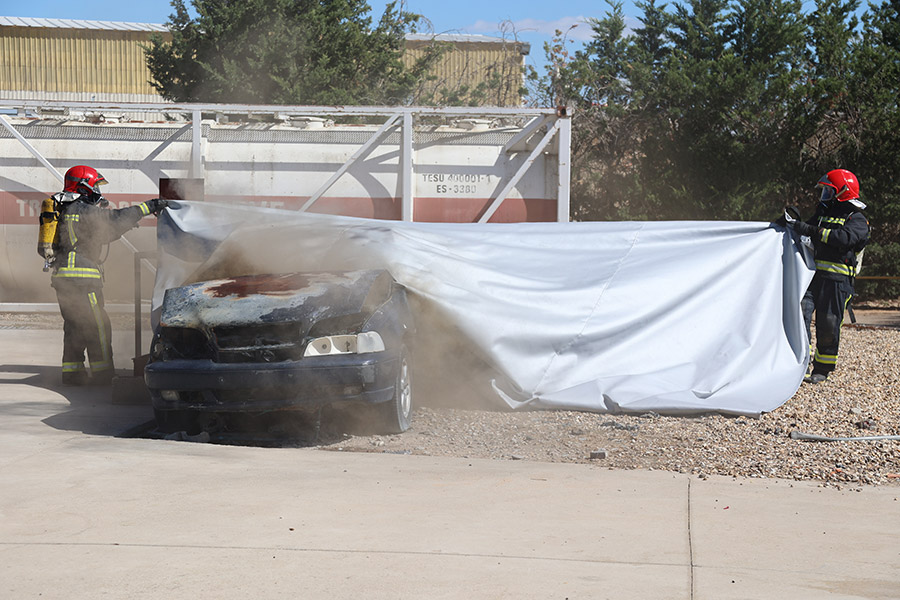
In the case that the blanket has been used in firefighting:
- Cooling: After removing the blanket, it is recommended to wait a few minutes for the blanket to cool down. The fabric will quickly dissipate heat, but there may be residues of melted plastics or metals stuck to the fabric, which pose a burn risk if in direct contact with skin.
- Use of PPEs: It is important to use proper PPEs (Personal Protective Equipment), such as gloves or masks, when handling the blanket after a fire. The blanket may contain plastics, metals, glass, corrosive liquids, toxic particles, among others, stuck to the fabric. These elements can be dangerous or cause irritations if they come into direct contact with the skin, are inhaled, or could pose a cutting hazard.
- Waste center: It is recommended not to handle the blanket beyond what is necessary, as highly toxic particles remain attached after a fire. With caution, it should be taken to a waste treatment center. Under no circumstances should it be disposed of in a trash bin or any location other than the designated one.
